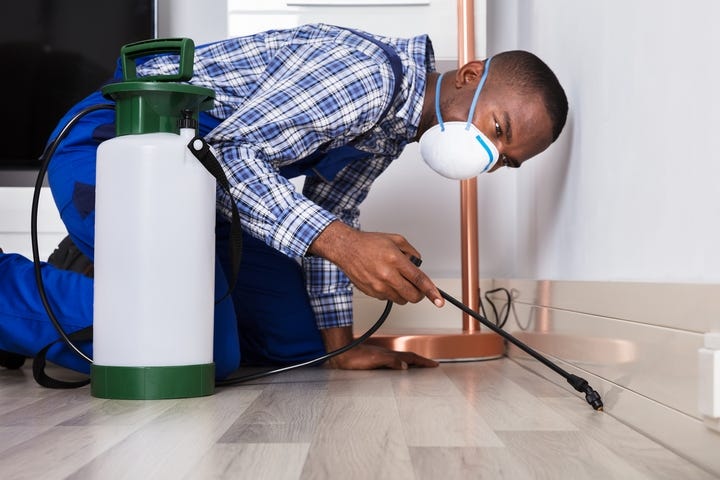Professional Parasite Control Techniques for Long-Term Results
Specialist pest control methods envelop an extensive method that starts with a thorough assessment and analysis, complied with by exact parasite recognition to comprehend their actions patterns. The implementation of Integrated Bug Monitoring (IPM) concepts, paired with eco-conscious therapies, creates the cornerstone of sustainable pest eradication.
Examination and Assessment
Upon getting in a residential property for parasite control solutions, the initial action is a comprehensive examination and evaluation to recognize the extent of the problem and figure out one of the most reliable therapy plan. Professional parasite control service technicians are educated to thoroughly analyze the properties, searching for signs of bug activity such as droppings, gnaw marks, nests, or any kind of architectural damage. They will additionally examine the problems that may be attracting pests, such as food resources, water leaks, or access points.

Pest Identification and Behavior

Additionally, understanding the behavior of the identified parasite is key to applying efficient control actions. As an example, knowing where insects nest, what they feed upon, and their activity patterns can aid pest control professionals create techniques to eliminate them efficiently. Some insects may be nocturnal, while others are a lot more active throughout the day. This expertise permits for the application of treatments at optimum times for optimum efficiency.
Integrated Pest Management (IPM)
Integrated Bug Administration (IPM) approaches incorporate numerous strategies to manage and stop pest infestations in a sustainable and eco-friendly way. pest control near me. By incorporating methods such as organic control, habitat control, alteration of cultural practices, and making use of immune selections, IPM intends to lessen using chemical pesticides
Among the vital principles of IPM is the emphasis on avoidance. This proactive method includes monitoring parasite populations routinely to detect any kind of possible issues prior to they escalate. By recognizing bug troubles beforehand, pest control actions can be executed swiftly and successfully.
Additionally, IPM advertises making use of safe bug control approaches whenever feasible. This can consist of employing natural killers of the parasites, presenting helpful pests, read what he said or using scents to interfere with mating patterns. By lowering reliance on chemical pesticides, IPM not only secures the atmosphere but additionally aids maintain a balance in the environment.
Environmentally-Friendly Treatments
Carrying out eco-conscious techniques in bug control procedures can effectively resolve invasions while prioritizing ecological sustainability. Environmentally-friendly treatments concentrate on minimizing the influence of insect control methods on ecological communities, non-target microorganisms, and human health.
An additional key facet of environmentally-friendly treatments is the usage of organic and eco-friendly products that damage down rapidly without leaving harmful residues in the setting. Botanical pesticides stemmed from plants like chrysanthemums or neem provide reliable pest control while presenting minimal risk to non-target types. Furthermore, utilizing approaches like heat treatments or scent traps her response can target particular pests with accuracy, lowering the general environmental impact of bug control methods.
Recurring Tracking and Maintenance
Normal inspections by experienced specialists are needed to recognize any type of indications of bug task, examine the effectiveness of previous treatments, and make modifications to the bug control plan as needed. By checking parasite populations over time, pest control experts can track patterns, prepare for possible concerns, and implement preventive measures to minimize the danger of future infestations.
Along with monitoring, upkeep techniques are important for long-lasting pest control success. This includes carrying out correct sanitation procedures to remove potential food and water sources for bugs, sealing access points to avoid bugs from entering the properties, and dealing with any type of architectural issues that might help with bug infestations (exterminator near me). By including ongoing tracking and upkeep right into an incorporated pest administration method, companies can guarantee a pest-free setting and guard their residential property versus expensive damage and health and wellness risks
Conclusion
To conclude, utilizing specialist parasite control methods such as detailed examination and analysis, precise insect identification and understanding of their actions, incorporated bug administration techniques, environmentally-friendly therapies, and recurring tracking and maintenance are vital for achieving lasting lead to insect control. By executing these approaches, people can efficiently manage bug invasions and maintain a pest-free setting in a sustainable terminate termite manner.